Section 13
Poetry and Song Lyrics
13.1 Fundamentals
13.2 Poetry within Narrative Text
13.3 Poetry in Stanza or Verse Form
13.4 Separation of Stanzas
13.5 Shape Poetry
13.6 Poems with Irregular Lines of Poetry
13.7 Prose Poetry
13.8 Reference Marks and Notes in Poetry
13.9 Scansion, Accent, and Meter
13.10 Hymnals and Songbooks
13.11 Titles, Hymn or Song Numbers
13.12 Samples
a. Retain font attributes.
b. Follow print use for either a slash or vertical line to indicate where one poetic line ends and another begins.
c. Follow print for spacing of symbols, which may begin or end a braille line. Identify the use of the symbols on the Special Symbols page, or in a transcriber's note before the text.
Example 13-1: Poetic Lines within Narrative Text
444 su7e/+ t 8! tru/ ,o!llo puts hm 9 _/
,on "s odd "t ( 8 9firm;y _/ ,w %ake ?
isl&0
13.3 Poetry in Stanza or Verse Form
One level: 1-3
Two levels: 1-5, 3-5
Three levels: 1-7, 3-7, 5-7
Four levels: 1-9, 3-9, 5-9, 7-9
etc.
a. Leave a blank line before and after a poem. Exceptions: Do not insert a blank line between a cell-5 or cell-7 heading and the poem to which it applies. Do not insert a blank line between a cell-5 heading entry word and a poem in a glossary.
b. A line of poetry may not be divided between braille pages.
Example 13-2: Poem with One Level

,my t;gue1 e atom ( my blood1 =m'd f ?
⠀⠀soil1 ? air1
,born "h ( p>5ts born "h f p>5ts ! same1
⠀⠀& _! p>5ts ! same1
,i1 n[ ?irty-sev5 ye>s old 9 p]fect h1l?
⠀⠀2g91
,hop+ to c1se n till d1?4
Example 13-3: Three-Level Poem

,glory 2 to ,god = dappl$ ?+s,-
⠀⠀,= skies ( c\ple-col\r z a br9d$ c[2
⠀⠀⠀⠀,= rose-moles all 9 /ipple ^u tr\t t
⠀⠀⠀⠀⠀⠀swim2
,fre%-firecoal *e/nut-falls2 f9*es' w+s2
⠀⠀,l&scape plott$ & piec$,-fold1 fall[1
⠀⠀⠀⠀⠀⠀& pl\<2
⠀⠀⠀⠀,& all trades1 _! ge> & tackle &
⠀⠀⠀⠀⠀⠀trim4
c. Poems that are centered on the print page use 1-3 margins or are treated as displayed material and use the margin in effect. (See Sample 13-1: Centered Poem on page 13-13.)
d. Use normal poetry indention when print is deeply indented.
Example 13-4: Poem with Deep Indention

⠀⠀⠀⠀⠀⠀⠀⠀⠀⠀⠀⠀⠀⠀⠀⠀⠀⠀⠀⠀⠀⠀⠀⠀⠀⠀⠀⠀⠀⠀⠀⠀⠀⠀⠀⠀⠀⠀⠀⠀
if ! be/ ( immortals r1lly drives me on1
,h]a's "l ^: ?"u drums ! sky60
⠀⠀,s he %\t$
,la%+ ! rage & fi<t+-fury 9 e ,trojan4
13.4 Separation of Stanzas
a. Leave a blank line before each stanza or verse.
b. Use cell-5 headings for stanza numbers.
c. When a stanza begins at the top of a print page within a braille page, insert the page change indicator and leave one blank line before beginning the stanza.
d. Leave a blank line at the top of the next braille page when a stanza ends on line 24 or 25 of the previous page. Start the new stanza on line 2 when a running head is not used, or line 3 when a running head is used.
(See Sample 13-2: Poem with Stanza Numbers on page 13-14.)13.6 Poems with Irregular Lines of Poetry
13-4: Poem with Discernible Lines of Poetry on page 13-17.)
The poem has inconsistent indention patterns, which are not reproduced.
or
The poem has multiple irregular indentions, which are not reproduced.
Three blank cells indicate wide spacing.
(See Sample 13-5: Poem with Uneven Indention and Wide Spacing on page 13-18.)
a. Use uncontracted braille. Use the grade 1 passage indicator and terminator around the entire poem. (See UEB, §5.4, Grade 1 Passage Indicator and §5.5, Grade 1 Terminator.)
b. Insert a transcriber's note to explain the use of uncontracted braille. Sample:
This poem has unusual letter and punctuation combinations. Braille is uncontracted so punctuation can be identified easily.
(See Sample 13-6: Embedded Punctuation in an Uncontracted Poem on page 13-20.)
13.7 Prose Poetry
a. Precede and follow a prose poem with blank lines.
b. Follow print for paragraph indention.
c. Ignore font attributes except where they are required for emphasis or distinction.
(See Sample 13-7: Prose Poem on page 13-21.)
13.8 Reference Marks and Notes in Poetry
Leave a blank between the end of a stanza, or the end of a poem, and the note separation line.
(See Sample 13-8: Poem with Reference Marks on page 13-22.)
13.9 Scansion, Accent, and Meter
a. Use contracted braille in the first version; do not show scansion, accented letter(s), meter, or emphasis that indicates stress.
b. Leave a blank line between the first and second versions.
c. To help offset the second writing, transcribe the second version using cell 3 for the left margin and the standard nested list format.
d. Transcribe the second version in uncontracted braille. Show all typeform, scansion, stress, and meter symbols.
e. Follow print when stress and meter symbols are placed above the affected words. The symbols are placed above the first letter of the syllable to which they apply. To accommodate room for one-letter syllables immediately followed by another syllable, it is permissible to place the stress or meter symbol over the space or capital indicator which precedes the word.
f. Blank lines are required preceding and following each line of the poem.
Example 13-5: Diagrammed Scansion with Ictus (Slash) and X
⠀⠀⠀⠀⠀⠀⠀⠀⠀⠀⠀⠀⠀⠀⠀⠀⠀⠀⠀⠀⠀⠀⠀⠀⠀⠀⠀⠀⠀⠀⠀⠀⠀⠀⠀⠀⠀⠀⠀⠀
,b s(t6 ,:at li<t "? yond] w9d[ br1ks8
⠀⠀⠀⠀⠀⠀⠀⠀⠀⠀⠀⠀⠀⠀⠀⠀⠀⠀⠀⠀⠀⠀⠀⠀⠀⠀⠀⠀⠀⠀⠀⠀⠀⠀⠀⠀⠀⠀⠀⠀
""=;;; [Dot locator for "use" precedes grade 1 passage indicator standing alone. UEB, §3.14]
⠀⠀⠀⠀⠀⠀⠀⠀⠀⠀⠀⠀⠀⠀⠀⠀⠀⠀⠀⠀⠀⠀⠀⠀⠀⠀⠀⠀⠀⠀⠀⠀⠀⠀⠀⠀⠀⠀⠀⠀
⠀⠀⠀x _/ x _/ x
⠀⠀,but ,,soft6 ,what ,,light through
⠀⠀⠀⠀⠀⠀⠀⠀⠀⠀⠀⠀⠀⠀⠀⠀⠀⠀⠀⠀⠀⠀⠀⠀⠀⠀⠀⠀⠀⠀⠀⠀⠀⠀⠀⠀⠀⠀⠀⠀
⠀⠀⠀⠀⠀⠀_/ x _/ x _/
⠀⠀⠀⠀,,yon,'der ,,win,'dow ,,breaks8;'
⠀⠀⠀⠀⠀⠀⠀⠀⠀⠀⠀⠀⠀⠀⠀⠀⠀⠀⠀⠀⠀⠀⠀⠀⠀⠀⠀⠀⠀⠀⠀⠀⠀⠀⠀⠀⠀⠀⠀⠀
g. Explain the two writings on the Transcriber's Notes page when there are multiple locations in the volume that use this technique. If the technique is used in a single location in the volume, explain the usage in a transcriber's note before the text. Sample:
The text is first shown without stress symbols, and then repeated with the appropriate symbols and no contractions. Stress symbols are inserted above the syllable to which they apply. Symbols used:
.=_/ Stressed syllable
.=x Unstressed syllable
a. These symbols are used to represent the signs indicating meter or rhythmic pattern of poetic lines. Follow print spacing of symbols and punctuation.
b. Identify meter symbols on the Special Symbols page or in a transcriber's note before the text. Use the names given in print (if any) when identifying the symbols for these signs. The foot is usually the solidus or vertical line (pipe). The caesura is usually the double solidus or double vertical line.
/ _/ Solidus (foot)
// _/_/ Double solidus (caesura)
| _\ Vertical line (pipe)
|| _\_\ Double vertical line
c. The foot and caesura symbols may begin or end a braille line when it is necessary to divide a line between braille lines. Exception: Do not break a line at a meter symbol when it is unspaced within a word.
d. A line break may not occur within a foot, e.g., between the vertical lines.
e. Contractions are not used in the second writing when some words are syllabified, and metered lines show only foot and/or caesura symbols. Contractions are used in the second writing when all words are not syllabified, and metered lines show only foot and/or caesura symbols.
f. Titles and authors are shown with the first writing. Titles/authors are only included with the second writings if they include symbols of scansion, accent/stress, or meter.
g. Attributions are shown with the first writing of the material and omitted in the second writing.
(See Sample 13-10: Attribution with First Writing on page 13-24 and Sample 13-11: Sentences with Foot and Caesura Symbols on page 13-25.)Example 13-6: Word with Unspaced Internal Foot
,all ! ni<t sleep came n ^u my eyelids
⠀⠀⠀⠀⠀⠀⠀⠀⠀⠀⠀⠀⠀⠀⠀⠀⠀⠀⠀⠀⠀⠀⠀⠀⠀⠀⠀⠀⠀⠀⠀⠀⠀⠀⠀⠀⠀⠀⠀⠀
⠀⠀,all ! _\ ni<t sleep _\
⠀⠀⠀⠀came n u_\pon my _\ eyelids
Example 13-7: Diagrammed Scansion and Meter
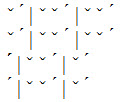
@+^/ _\ @+@+^/ _\ @+@+^/
@+^/ _\ @+@+^/ _\ @+@+^/
^/ _\ @+@+^/ _\ @+^/
^/ _\ @+@+^/ _\ @+^/
13.10 Hymnals and Songbooks
Music notation may be omitted when lyrics of a song or hymn are accompanied by music notation for illustrative purposes only, and there is no intention for that notation to be used for practice or performance. Insert a transcriber's note to explain this omission. Transcribe the lyrics as directed below.
13.11 Titles, Hymn or Song Numbers
a. Block permission-to-copy notices in the fifth cell to the right of the material to which they apply, on the line after the title or heading. (See Formats, §9.5, Source Citations and Permission to Copy.)
b. Leave a blank line following the title. List the information printed between the title and the song in the following order:
(1) Text centered below the title.
(2) Text printed on the left side of the page.
(3) Text printed on the right side of the page.
Use 7-5 margins for each item; do not leave blank lines between these items. Do leave a blank line before the beginning of the first verse. (See Sample 13-13: Song Title with Additional Information on page 13-28.)
a. Transcribe verse numbers as cell-5 headings.
b. Follow print for capitalization and punctuation of the verses.
c. Omit hyphens that are printed between syllables unless they are intended to be part of the word.
d. Use 1-3 margins for each line of the lyric. Use punctuation and rhyme scheme to determine each line of the lyric.
e. When text shows the lyrics of the first verse—or any portion of a song or hymn—printed within the music notation and followed by the remaining verses printed in poetry format, the same format is used for all the verses. (See Sample 13-14: Song with Verses on page 13-29.)
f. Follow print if the refrain or chorus is repeated.
g. Follow print if only the word "refrain" or "chorus" indicates the repetition.
13.12 Samples
Sample 13-2: Poem with Stanza Numbers, page 13-14
Sample 13-3: Shape Poem, page 13-16
Sample 13-4: Poem with Discernible Lines of Poetry, page 13-17
Sample 13-5: Poem with Uneven Indention and Wide Spacing, page 13-18
Sample 13-6: Embedded Punctuation in Uncontracted Poem, page 13-20
Sample 13-7: Prose Poem, page 13-21
Sample 13-8: Poem with Reference Marks, page 13-22
Sample 13-9: Lines of Poetry with Stress Marks, page 13-23
Sample 13-10: Attribution with First Writing, page 13-24
Sample 13-11: Sentences with Foot and Caesura Symbols, page 13-25
Sample 13-12: Lines of Poetry with Stress and Meter, page 13-26
Sample 13-13: Song Title with Additional Information, page 13-28
Sample 13-14: Song with Verses, page 13-29
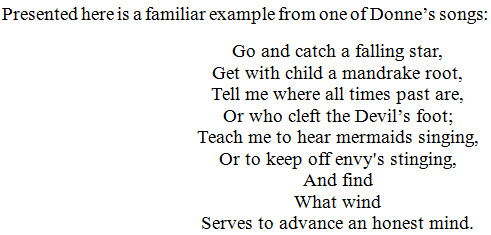
10 ,pres5t$ "h is a famili> example f "o (
11 ,donne's s;gs3
12 ⠀⠀⠀⠀⠀⠀⠀⠀⠀⠀⠀⠀⠀⠀⠀⠀⠀⠀⠀⠀⠀⠀⠀⠀⠀⠀⠀⠀⠀⠀⠀⠀⠀⠀⠀⠀⠀⠀⠀⠀
13 ⠀⠀,g & cat* a fall+ />1
14 ⠀⠀,get ) * a m&rake root1
15 ⠀⠀,tell me ": all "ts pa/ >e1
16 ⠀⠀,or :o cleft ! ,devil's foot2
17 ⠀⠀,t1* me to he> m]maids s++1
18 ⠀⠀,or to keep (f 5vy's /++1
19 ⠀⠀,& f9d
20 ⠀⠀,:at w9d
21 ⠀⠀,s]ves to adv.e an h"o/ m9d4

1⠀⠀⠀⠀⠀⠀⠀⠀⠀⠀⠀⠀⠀⠀⠀⠀,a ,victim
2⠀⠀⠀⠀⠀⠀⠀⠀⠀⠀⠀⠀⠀⠀⠀⠀⠀⠀⠀⠀⠀⠀⠀⠀⠀⠀⠀⠀⠀⠀⠀⠀⠀⠀⠀⠀⠀⠀⠀⠀⠀
3⠀⠀⠀⠀⠀⠀⠀⠀⠀⠀⠀⠀by ,alfr$ ,t5nyson
4⠀⠀⠀⠀⠀⠀⠀⠀⠀⠀⠀⠀⠀⠀⠀⠀⠀⠀⠀⠀⠀⠀⠀⠀⠀⠀⠀⠀⠀⠀⠀⠀⠀⠀⠀⠀⠀⠀⠀⠀⠀
5⠀⠀⠀⠀⠀,i4
6⠀,a plague ^u ! p fell1
7⠀⠀⠀,a fam9e af laid !m l[2
8⠀,!n ?orpe & byre >ose 9 fire1
9⠀⠀⠀,= on !m brake ! sudd5 foe2
10 ,s ?ick !y di$ ! p cri$1
11 ⠀⠀,8,! ,gods >e mov$ ag/ ! l&4,0
12 ,! ,prie/ 9 horror ab 8 alt>
13 ⠀⠀,to ,?or & ,od9 lift$ a h&3
14 ⠀⠀⠀⠀,8,help u f fam9e
15 ⠀⠀⠀⠀,& plague & /rife6
16 ⠀⠀⠀⠀,:at wd y h ( u8
17 ⠀⠀⠀⠀,human life8
18 ⠀⠀⠀⠀,7 x \r ne>e/1
19 ⠀⠀⠀⠀,7 x \r de>e/1,-
20 ⠀⠀⠀⠀,answ]1 ,o answ]6,-
21 ⠀⠀⠀⠀,we give y 8 life4,0
22 ⠀⠀⠀⠀⠀⠀⠀⠀⠀⠀⠀⠀⠀⠀⠀⠀⠀⠀⠀⠀⠀⠀⠀⠀⠀⠀⠀⠀⠀⠀⠀⠀⠀⠀⠀⠀⠀⠀⠀⠀
23 ⠀⠀⠀⠀,,ii4
24 ,b / ! foeman spoil'd & burn'd1
25 ⠀⠀,& cattle di$1 & de] 9 wood1
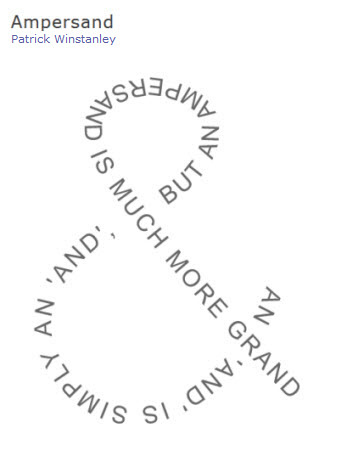
1⠀⠀⠀⠀⠀⠀⠀⠀⠀⠀⠀⠀⠀⠀⠀⠀⠀,amp]s&
2⠀⠀⠀⠀⠀⠀⠀⠀⠀⠀⠀⠀⠀⠀⠀⠀⠀⠀⠀⠀⠀⠀⠀⠀⠀⠀⠀⠀⠀⠀⠀⠀⠀⠀⠀⠀⠀⠀⠀⠀⠀
3⠀⠀⠀⠀⠀⠀⠀⠀⠀⠀⠀⠀,patrick ,w9/anley
4⠀⠀⠀⠀⠀⠀⠀⠀⠀⠀⠀⠀⠀⠀⠀⠀⠀⠀⠀⠀⠀⠀⠀⠀⠀⠀⠀⠀⠀⠀⠀⠀⠀⠀⠀⠀⠀⠀⠀⠀⠀
5⠀⠀⠀⠀⠀⠀⠀@.<,! poem is writt5 9 ! %ape ( an
6⠀⠀⠀⠀⠀amp]s&4@.>
7⠀⠀⠀⠀⠀⠀⠀⠀⠀⠀⠀⠀⠀⠀⠀⠀⠀⠀⠀⠀⠀⠀⠀⠀⠀⠀⠀⠀⠀⠀⠀⠀⠀⠀⠀⠀⠀⠀⠀⠀⠀
8⠀,,,an ,8&,0 is simply an ,8&,01
9⠀b an amp]s& is m* m gr&,'
Or
10 ,,,an ,8&,0 is simply an ,8&,01 b an11 ⠀⠀amp]s& is m* m gr&,'
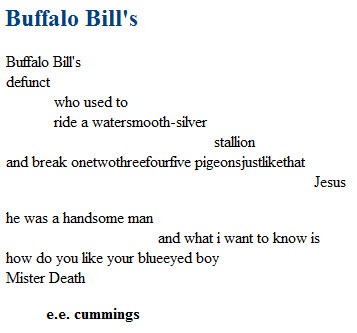
1⠀⠀⠀⠀⠀⠀⠀⠀⠀⠀⠀⠀⠀,bu6alo ,bill's
2⠀⠀⠀⠀⠀⠀⠀⠀⠀⠀⠀⠀⠀⠀⠀⠀⠀⠀⠀⠀⠀⠀⠀⠀⠀⠀⠀⠀⠀⠀⠀⠀⠀⠀⠀⠀⠀⠀⠀⠀⠀
3⠀,bu6alo ,bill's
4⠀defunct
5⠀⠀⠀:o us$ to
6⠀⠀⠀ride a wat]smoo?-silv]
7⠀⠀⠀⠀⠀⠀⠀/allion
8⠀& br1k "otwo?reef\rfive
9⠀⠀⠀⠀⠀⠀⠀⠀⠀⠀⠀pigeonsju/like?at
10 ⠀⠀⠀⠀⠀⠀⠀⠀,jesus
11 ⠀⠀⠀⠀⠀⠀⠀⠀⠀⠀⠀⠀⠀⠀⠀⠀⠀⠀⠀⠀⠀⠀⠀⠀⠀⠀⠀⠀⠀⠀⠀⠀⠀⠀⠀⠀⠀⠀⠀⠀
12 he 0 a h&"s man
13 ⠀⠀⠀⠀& :at i want to "k is
14 h[ d y l yr blueey$ boy
15 ,mi/] ,d1?
16 ⠀⠀⠀⠀e4e4 cumm+s

1⠀⠀⠀⠀⠀⠀⠀@.<,?ree blank cells 9dicate #,-
2⠀⠀⠀⠀⠀wide spac+4@.>
3⠀⠀⠀⠀⠀⠀⠀⠀⠀⠀⠀⠀⠀⠀⠀⠀⠀⠀⠀⠀⠀⠀⠀⠀⠀⠀⠀⠀⠀⠀⠀⠀⠀⠀⠀⠀⠀⠀⠀⠀⠀
4⠀⠀⠀⠀⠀⠀⠀⠀⠀⠀⠀⠀⠀⠀⠀⠀,! ,sky ,0
5⠀⠀⠀⠀⠀⠀⠀⠀⠀⠀⠀⠀⠀⠀⠀⠀⠀⠀⠀⠀⠀⠀⠀⠀⠀⠀⠀⠀⠀⠀⠀⠀⠀⠀⠀⠀⠀⠀⠀⠀⠀
6⠀⠀⠀⠀⠀⠀⠀⠀⠀⠀⠀by ;,e4 ;,e4 ,cumm+s
7⠀⠀⠀⠀⠀⠀⠀⠀⠀⠀⠀⠀⠀⠀⠀⠀⠀⠀⠀⠀⠀⠀⠀⠀⠀⠀⠀⠀⠀⠀⠀⠀⠀⠀⠀⠀⠀⠀⠀⠀⠀
8⠀!
9⠀⠀⠀sky
10 ⠀⠀⠀⠀⠀⠀0
11 can⠀⠀⠀dy⠀⠀⠀lu
12 m9\s
13 ⠀⠀⠀⠀⠀⠀$ible
14 spry
15 ⠀⠀⠀⠀p9ks %y
16 lemons
17 gre5s⠀⠀⠀coo⠀⠀⠀;l *oc
18 olate
19 ;s4
20 ⠀⠀⠀⠀⠀⠀⠀⠀⠀⠀⠀⠀⠀⠀⠀⠀⠀⠀⠀⠀⠀⠀⠀⠀⠀⠀⠀⠀⠀⠀⠀⠀⠀⠀⠀⠀⠀⠀⠀⠀
21 ⠀⠀444
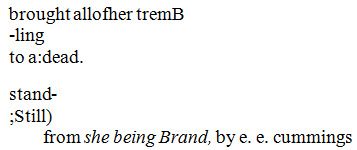
1⠀⠀⠀⠀⠀⠀⠀@.<,? poem has unusual lr & #.-
2⠀⠀⠀⠀⠀punctua;n comb9a;ns4 ,brl is
3⠀⠀⠀⠀⠀uncontract$ s punctua;n c 2 id5tifi$
4⠀⠀⠀⠀⠀easily4@.>
5⠀⠀⠀⠀⠀⠀⠀⠀⠀⠀⠀⠀⠀⠀⠀⠀⠀⠀⠀⠀⠀⠀⠀⠀⠀⠀⠀⠀⠀⠀⠀⠀⠀⠀⠀⠀⠀⠀⠀⠀⠀
6⠀;;;brought allofher trem,b
7⠀-ling
8⠀to a3dead4
9⠀⠀⠀⠀⠀⠀⠀⠀⠀⠀⠀⠀⠀⠀⠀⠀⠀⠀⠀⠀⠀⠀⠀⠀⠀⠀⠀⠀⠀⠀⠀⠀⠀⠀⠀⠀⠀⠀⠀⠀⠀
10 stand-
11 2,still">;'
12 ⠀⠀⠀⠀f .7%e 2+ ,br&1.' by ;e4 ;e4 cumm+s
13 ⠀⠀⠀⠀⠀⠀⠀⠀⠀⠀⠀⠀⠀⠀⠀⠀⠀⠀⠀⠀⠀⠀⠀⠀⠀⠀⠀⠀⠀⠀⠀⠀⠀⠀⠀⠀⠀⠀⠀⠀

11 ⠀⠀⠀⠀.1,t5d] .1,buttons .<,a ,*air.>
12 ⠀⠀⠀⠀⠀⠀⠀⠀⠀⠀⠀⠀⠀⠀⠀⠀⠀⠀⠀⠀⠀⠀⠀⠀⠀⠀⠀⠀⠀⠀⠀⠀⠀⠀⠀⠀⠀⠀⠀⠀
13 ⠀⠀⠀⠀⠀⠀⠀⠀⠀⠀⠀⠀by ,g]trude ,/e9
14 ⠀⠀⠀⠀⠀⠀⠀⠀⠀⠀⠀⠀⠀⠀⠀⠀⠀⠀⠀⠀⠀⠀⠀⠀⠀⠀⠀⠀⠀⠀⠀⠀⠀⠀⠀⠀⠀⠀⠀⠀
15 ,a ,,*air4
16 ⠀⠀⠀⠀⠀⠀⠀⠀⠀⠀⠀⠀⠀⠀⠀⠀⠀⠀⠀⠀⠀⠀⠀⠀⠀⠀⠀⠀⠀⠀⠀⠀⠀⠀⠀⠀⠀⠀⠀⠀
17 ,a wid[ 9 a wise veil & m g>;ts %[s t
18 %ad[s >e ev54 ,x addresses no m1 x %ad[s
19 ! /age & le>n+4 ,a regul> >range;t1 !
20 sev]e/ & ! mo/ pres]v$ is t : has !
21 >range;t n m ?an alw au?oris$4
22 ⠀⠀⠀⠀⠀⠀⠀⠀⠀⠀⠀⠀⠀⠀⠀⠀⠀⠀⠀⠀⠀⠀⠀⠀⠀⠀⠀⠀⠀⠀⠀⠀⠀⠀⠀⠀⠀⠀⠀⠀
23 ,a suitable e/abli%;t1 well h\s$1 444
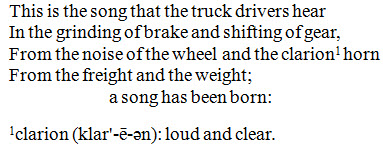
14 ,? is ! s;g t ! truck driv]s he>
15 ,9 ! gr9d+ ( brake & %ift+ ( ge>1
16 ,f ! noise ( ! :eel & ! cl>ion;9#a horn
17 ,f ! frei<t & ! wei<t2
18 ⠀⠀a s;g has be5 born3
19 "333333
20 ;9#a;'cl>ion "<klar^.b-@-e-_5n">3 l\d &
21 ⠀⠀cle>4
22 -------------------------------------#di
23 444

4⠀⠀⠀⠀⠀⠀⠀@.<,! text is f/ %[n )\t /ress
5⠀⠀⠀⠀⠀symbols1 & !n rep1t$ ) ! appropriate
6⠀⠀⠀⠀⠀symbols & no 3trac;ns4 ,/ress
7⠀⠀⠀⠀⠀symbols >e 9s]t$ abv ! syllable to :
8⠀⠀⠀⠀⠀!y apply4 ,symbols us$3
9⠀⠀⠀⠀⠀⠀⠀⠀⠀⠀⠀⠀⠀⠀⠀⠀⠀⠀⠀⠀⠀⠀⠀⠀⠀⠀⠀⠀⠀⠀⠀⠀⠀⠀⠀⠀⠀⠀⠀⠀⠀
10 .=^/ ,/ress$ syllable
11 .=@+ ,un/ress$ syllable@.>
12 ⠀⠀⠀⠀⠀⠀⠀⠀⠀⠀⠀⠀⠀⠀⠀⠀⠀⠀⠀⠀⠀⠀⠀⠀⠀⠀⠀⠀⠀⠀⠀⠀⠀⠀⠀⠀⠀⠀⠀⠀
13 ,se5 f abv1 ! sky
14 ,is deep4 ,cl\ds float d[n "!1
15 ⠀⠀⠀⠀⠀⠀⠀⠀⠀⠀⠀⠀⠀⠀⠀⠀⠀⠀⠀⠀⠀⠀⠀⠀⠀⠀⠀⠀⠀⠀⠀⠀⠀⠀⠀⠀⠀⠀⠀⠀
16 ⠀⠀⠀^/ @+ @+^/ @+ ^/
17 ⠀⠀,seen from above1 the sky
18 ⠀⠀⠀⠀⠀⠀⠀⠀⠀⠀⠀⠀⠀⠀⠀⠀⠀⠀⠀⠀⠀⠀⠀⠀⠀⠀⠀⠀⠀⠀⠀⠀⠀⠀⠀⠀⠀⠀⠀⠀
19 ⠀⠀⠀@+ ^/ ^/ ^/ @+ ^/
20 ⠀⠀,is deep4 ,clouds float down there1

1⠀⠀⠀⠀⠀⠀⠀⠀⠀⠀⠀⠀⠀⠀⠀⠀⠀⠀⠀⠀⠀⠀⠀⠀⠀⠀⠀⠀⠀⠀⠀⠀⠀⠀⠀⠀⠀⠀#,-
2⠀,i may ass]t ,et]nal ,provid;e4
3⠀,& ju/ify ! ways ( ,god to m54
4⠀⠀⠀⠀⠀,milton1 .1,p>adise .1,lo/1 page
5⠀⠀⠀⠀⠀#bbg1 l9es #be-#bf
6⠀⠀⠀⠀⠀⠀⠀⠀⠀⠀⠀⠀⠀⠀⠀⠀⠀⠀⠀⠀⠀⠀⠀⠀⠀⠀⠀⠀⠀⠀⠀⠀⠀⠀⠀⠀⠀⠀⠀⠀⠀
7⠀⠀⠀@+ ^/ @+^/ @+^/
8⠀⠀⠀,i may _/ assert _/ ,eter- _/
9⠀⠀⠀⠀⠀⠀⠀⠀⠀⠀⠀⠀⠀⠀⠀⠀⠀⠀⠀⠀⠀⠀⠀⠀⠀⠀⠀⠀⠀⠀⠀⠀⠀⠀⠀⠀⠀⠀⠀⠀⠀
10 ⠀⠀⠀⠀@+ ^/ @+^/
11 ⠀⠀⠀⠀nal ,prov- _/ idence4
12 ⠀⠀⠀⠀⠀⠀⠀⠀⠀⠀⠀⠀⠀⠀⠀⠀⠀⠀⠀⠀⠀⠀⠀⠀⠀⠀⠀⠀⠀⠀⠀⠀⠀⠀⠀⠀⠀⠀⠀⠀
13 ⠀⠀⠀@+ ^/ @+^/ @+ ^/
14 ⠀⠀,and jus- _/ tify _/ the ways _/
15 ⠀⠀⠀⠀⠀⠀⠀⠀⠀⠀⠀⠀⠀⠀⠀⠀⠀⠀⠀⠀⠀⠀⠀⠀⠀⠀⠀⠀⠀⠀⠀⠀⠀⠀⠀⠀⠀⠀⠀⠀
16 ⠀⠀⠀⠀@+ ^/ @+ ^/
17 ⠀⠀⠀⠀of ,god _/ to men4
18 ⠀⠀⠀⠀⠀⠀⠀⠀⠀⠀⠀⠀⠀⠀⠀⠀⠀⠀⠀⠀⠀⠀⠀⠀⠀⠀⠀⠀⠀⠀⠀⠀⠀⠀⠀⠀⠀⠀⠀⠀
1⠀,ah1 4t9ctly ,i rememb] x 0 9 ! #,-
2⠀⠀⠀bl1k ,decemb]2
3⠀,& ea* sep'rate dy+ emb] wr"\ xs <o/ ^u
4⠀⠀⠀! floor4
5⠀⠀⠀⠀⠀⠀⠀⠀⠀⠀⠀⠀⠀⠀⠀⠀⠀⠀⠀⠀⠀⠀⠀⠀⠀⠀⠀⠀⠀⠀⠀⠀⠀⠀⠀⠀⠀⠀⠀⠀⠀
6⠀⠀⠀;;;,ah1 dis _\ -tinct-ly _\ ,i re _\
7⠀⠀⠀⠀⠀-mem-ber _\_\ it was _\ in the _\
8⠀⠀⠀⠀⠀bleak ,de _\ -cem-ber2
9⠀⠀⠀,and each _\ sep-'rate _\ dy-ing _\
10 ⠀⠀⠀⠀em-ber _\_\ wrought its _\ ghost u
11 ⠀⠀⠀⠀_\ -pon the _\ floor4;'

1⠀⠀⠀⠀⠀⠀⠀⠀⠀⠀⠀⠀⠀,william ,blake
2⠀⠀⠀⠀⠀⠀⠀⠀⠀⠀⠀⠀⠀⠀⠀.1,! .1,pip]
3⠀⠀⠀⠀⠀⠀"<f/ two /anzas"> "<,tro*aic">
4⠀⠀⠀⠀⠀⠀⠀⠀⠀⠀⠀⠀⠀⠀⠀⠀⠀⠀⠀⠀⠀⠀⠀⠀⠀⠀⠀⠀⠀⠀⠀⠀⠀⠀⠀⠀⠀⠀⠀⠀⠀
5⠀⠀⠀⠀⠀⠀⠀@.<,! text is f/ %[n )\t /ress &
6⠀⠀⠀⠀⠀met] symbols1 & !n rep1t$ ) !
7⠀⠀⠀⠀⠀appropriate symbols & no 3trac;ns4
8⠀⠀⠀⠀⠀,/ress symbols >e 9s]t$ abv !
9⠀⠀⠀⠀⠀syllable to : !y apply4 ,symbols
10 ⠀⠀⠀⠀us$3
11 ⠀⠀⠀⠀⠀⠀⠀⠀⠀⠀⠀⠀⠀⠀⠀⠀⠀⠀⠀⠀⠀⠀⠀⠀⠀⠀⠀⠀⠀⠀⠀⠀⠀⠀⠀⠀⠀⠀⠀⠀
12 .=^/ ,/ress$ syllable
13 .=@+ ,un/ress$ syllable
14 .=_\ ,v]tical l9e@.>
15 ⠀⠀⠀⠀⠀⠀⠀⠀⠀⠀⠀⠀⠀⠀⠀⠀⠀⠀⠀⠀⠀⠀⠀⠀⠀⠀⠀⠀⠀⠀⠀⠀⠀⠀⠀⠀⠀⠀⠀⠀
16 ,pip+ d[n ! valleys wild1
17 ⠀⠀,pip+ s;gs ( pl1sant glee1
18 ,on a cl\d ,i saw a *1
19 ⠀⠀,& he lau<+ sd to me3
20 ⠀⠀⠀⠀⠀⠀⠀⠀⠀⠀⠀⠀⠀⠀⠀⠀⠀⠀⠀⠀⠀⠀⠀⠀⠀⠀⠀⠀⠀⠀⠀⠀⠀⠀⠀⠀⠀⠀⠀⠀
—New Braille Page—
1⠀⠀⠀⠀^/ @+ ^/ @+ ^/ @+2⠀⠀⠀,piping _\ down the _\ valleys _\
3⠀⠀⠀⠀⠀⠀⠀⠀⠀⠀⠀⠀⠀⠀⠀⠀⠀⠀⠀⠀⠀⠀⠀⠀⠀⠀⠀⠀⠀⠀⠀⠀⠀⠀⠀⠀⠀⠀⠀⠀⠀
4⠀⠀⠀⠀⠀⠀⠀wild1
5⠀⠀⠀⠀⠀⠀⠀⠀⠀⠀⠀⠀⠀⠀⠀⠀⠀⠀⠀⠀⠀⠀⠀⠀⠀⠀⠀⠀⠀⠀⠀⠀⠀⠀⠀⠀⠀⠀⠀⠀⠀
6⠀⠀⠀⠀⠀⠀^/ @+ ^/ @+ ^/ @+
7⠀⠀⠀⠀⠀,piping _\ songs of _\ pleasant _\
8⠀⠀⠀⠀⠀⠀⠀⠀⠀⠀⠀⠀⠀⠀⠀⠀⠀⠀⠀⠀⠀⠀⠀⠀⠀⠀⠀⠀⠀⠀⠀⠀⠀⠀⠀⠀⠀⠀⠀⠀⠀
9⠀⠀⠀⠀⠀⠀⠀glee1
10 ⠀⠀⠀⠀⠀⠀⠀⠀⠀⠀⠀⠀⠀⠀⠀⠀⠀⠀⠀⠀⠀⠀⠀⠀⠀⠀⠀⠀⠀⠀⠀⠀⠀⠀⠀⠀⠀⠀⠀⠀
11 ⠀⠀⠀^/ @+ ^/ @+ ^/ @+
12 ⠀⠀,on a _\ cloud ,i _\ saw a _\ child1
13 ⠀⠀⠀⠀⠀⠀⠀⠀⠀⠀⠀⠀⠀⠀⠀⠀⠀⠀⠀⠀⠀⠀⠀⠀⠀⠀⠀⠀⠀⠀⠀⠀⠀⠀⠀⠀⠀⠀⠀⠀
14 ⠀⠀⠀⠀⠀^/ @+ ^/ @+ ^/ @+
15 ⠀⠀⠀⠀,and he _\ laughing _\ said to _\
16 ⠀⠀⠀⠀⠀⠀⠀⠀⠀⠀⠀⠀⠀⠀⠀⠀⠀⠀⠀⠀⠀⠀⠀⠀⠀⠀⠀⠀⠀⠀⠀⠀⠀⠀⠀⠀⠀⠀⠀⠀
17 ⠀⠀⠀⠀⠀⠀me3

1⠀⠀⠀⠀⠀⠀⠀⠀⠀⠀⠀⠀⠀⠀,ov] ! ,ra9b[
2⠀⠀⠀⠀⠀⠀⠀⠀⠀⠀f .7,! ,wiz>d ( ,oz.'
3⠀⠀⠀⠀⠀⠀⠀⠀⠀⠀⠀⠀⠀⠀⠀⠀⠀⠀⠀⠀⠀⠀⠀⠀⠀⠀⠀⠀⠀⠀⠀⠀⠀⠀⠀⠀⠀⠀⠀⠀⠀
4⠀⠀⠀⠀⠀⠀⠀,^ws by ;,e4 ;,y4 ,h>burg
5⠀⠀⠀⠀⠀⠀⠀,music by ,h>old ,>l5
6⠀⠀⠀⠀⠀⠀⠀⠀⠀⠀⠀⠀⠀⠀⠀⠀⠀⠀⠀⠀⠀⠀⠀⠀⠀⠀⠀⠀⠀⠀⠀⠀⠀⠀⠀⠀⠀⠀⠀⠀⠀
7⠀,"s": ov] ! ra9b[1 way up hi<1

1⠀⠀⠀⠀⠀⠀⠀⠀⠀,on ,top ( ,old ,smokey
2⠀⠀⠀⠀⠀⠀⠀⠀⠀⠀⠀⠀⠀⠀⠀⠀⠀⠀⠀⠀⠀⠀⠀⠀⠀⠀⠀⠀⠀⠀⠀⠀⠀⠀⠀⠀⠀⠀⠀⠀⠀
3⠀,on top ( old ,smokey1
4⠀,all cov]$ ) sn[1
5⠀,i lo/ my true lov]1
6⠀,by c\rt9' too sl[4
7⠀⠀⠀⠀⠀⠀⠀⠀⠀⠀⠀⠀⠀⠀⠀⠀⠀⠀⠀⠀⠀⠀⠀⠀⠀⠀⠀⠀⠀⠀⠀⠀⠀⠀⠀⠀⠀⠀⠀⠀⠀
8⠀⠀⠀⠀⠀#b4
9⠀,n[1 c\rt9's a pl1sure1
10 444
11 ⠀⠀⠀⠀⠀⠀⠀⠀⠀⠀⠀⠀⠀⠀⠀⠀⠀⠀⠀⠀⠀⠀⠀⠀⠀⠀⠀⠀⠀⠀⠀⠀⠀⠀⠀⠀⠀⠀⠀⠀
12 ⠀⠀⠀⠀#c4
13 ,a ?ief w j rob y
14 444